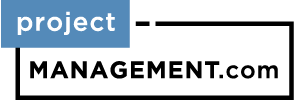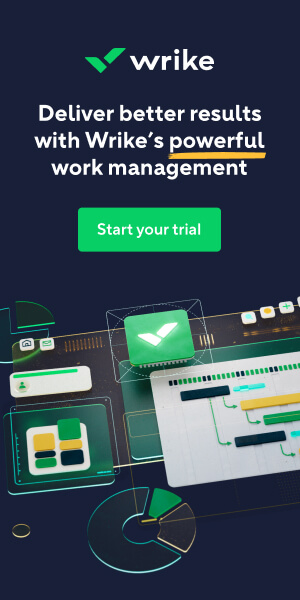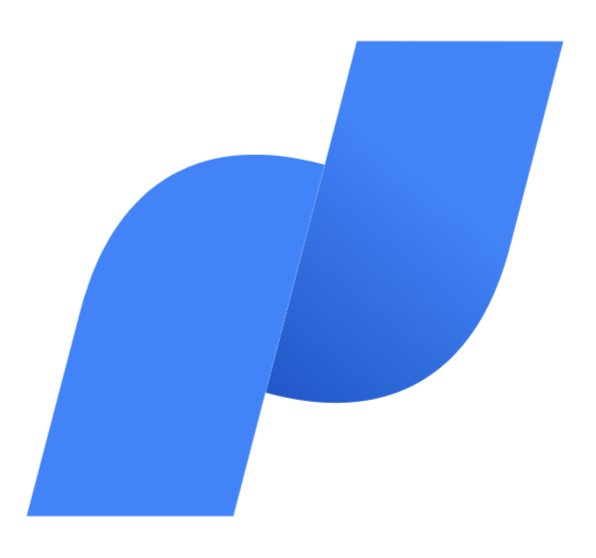Identity and access management (IAM) is a set of business practices, policies, and technological tools that grants the appropriate level of access by only allowing users to access what they need to do their job. The IAM framework confirms the user has authorized access to proprietary business information and internal resources by authenticating the user’s credentials, such as a username and password combined with a text or email response or a fingerprint.
Featured Partners: Identity Management (IAM) Software
What are IAM Best Practices?
The best IAM practices must be able to help identify, authenticate, and authorize users. An authorized user needs access to computers, software applications, and business IT resources to perform a set of defined tasks based on an access level. These IAM best practices are implemented technologies or business practices which help minimize or eliminate any unauthorized users from gaining access to all business IT resources.
Zero-trust security
Zero-trust security practices refer to a business strategy in which no user, application, or the data produced from an application is trusted by default. Every user, application, and data on the network is considered hostile. After a user identity is verified or an application’s data is confirmed, the requested access to network resources is made available.
Role-based access controls (RBAC)
Role-based access controls are predefined access rights that grant a user permission to execute specific actions. One RBAC role can be writing privileges, and the other can be read-only.
Multi-factor authentication (MFA)
MFA involves having a user provide two ways to verify who they are before access is granted to an IT system. An example is a successful password login that generates an email to the same user to enter a 5-digit code. If the 5-digit code is entered correctly, then the multi-factored authentication is successful.
Single sign-on (SSO)
SSO validates users once, and once validated, users can access all IT systems without having to log into each system individually. With SSO, the user’s password must be complex and not easy to guess.
What Key Features Should All IAM Software Have?
Some of the IAM key features will be directly associated with best IAM practices, so hearing about it twice means it is that important. That said, here are some of the key features that should be available in any IAM software.
Two-factor authentication (2FA)
2FA falls under the category of multi-factored authentication and uses the same concept of two credentialed pieces of information from a user.
Dynamic password management
Dynamic password management takes the password-making task out of employees’ hands by creating a distinctive and robust password for corporate web applications that is changed on a routine basis. Employees don’t know the web application passwords and use their SSO login to access corporate websites.
App shaping
Typically, when a user is granted access to a business application, the user has full access to the application. With app shaping, a user’s access is narrowed down to what they need to do to complete a task. In addition, app shaping can redact specific fields, disable features, or make an application read-only.
Audit trials
This IAM feature allows users to track more than just who logs on and at what time. The more sophisticated IAM solutions can track what specific feature was used in an application, send alerts for unusual activity, and capture screenshots of suspicious or nefarious activity.
User-empowered identity
User-empowered identity gives the user an immediate ability to take appropriate action if they suspect someone is illegally trying to use their login information. For example, the user can disable the account or change the password.
Differences Between an IAM Solution and a Password Manager
IAM software is a comprehensive solution consisting of the best cybersecurity practices for identity and access management, the IAM tools that aid in privileged access management (PAM), and the principle of least privilege to protect sensitive business information.
IAM ensures users have a legitimate business need before being granted permissions or privileges to access business resources for a predetermined period. A password manager can be one of the many features included in an IAM solution to reliably secure business-related information.
A password manager provides the convenience of allowing a user to remember one strong generated password. The generated password is stored as a login credential in one centralized, encrypted repository, and it allows the user to log in to multiple IT business systems to complete organizational-related tasks.
Moreover, the generated password is changed at a predefined period based on IAM best practices. That said, a password management feature is simply another tool like PAM and SSO to manage users’ permissions and privileges.
The Pillars of IAM Software
An IAM solution addresses each of the five pillars with best practices, policies, or an IAM tool to provide complete protection of a business network, information, and any physically secured spaces. In reviewing the five pillars, we’ll also identify some of the IAM tools or business practices to address each pillar.
Life cycle and governance
The first pillar refers to the policies, processes, and technologies used to help provision, de-provision, and modify digital identities from a life cycle management perspective. All digital identities should periodically be reviewed to ensure the account is valid and that specific access is still required. The governance council defines the policies and requirements for the types of accounts created and the created account’s purpose. Role-based access helps fulfill this requirement.
SSO and MFA
These IAM tools authenticate a digital identity to one user only. This creates a reliable way of ensuring the right person is authenticated for certain requests, and in the event the account is compromised, bad actors won’t be able to access unauthorized or sensitive data.
Network access control
Network access control is a centralized approach for securing network access using a zero-trust access model that requires continuous verification of all devices, data, and users. Additionally, it keeps unauthorized devices and users from gaining access to the business network.
Privileged account management
PAM manages and maintains oversight of any user with an elevated account to access IT resources or confidential employee information. IT administrators and human resource staff can have elevated accounts to perform their assigned tasks. Information security teams can track any malicious activity by an employee abusing privileges and take immediate action to disable the account.
Encryption keys
Encryption keys are used in many ways. The data-at-rest symmetric key is used to encrypt and decrypt data. In contrast, asymmetric keys involve public and private keys and are used for data-in-motion, like moving through a network.
Encryption keys should be stored in a hardware security module (HSM) since cybercriminals often target these keys.
Our Picks: IAM Software Tools
Identity and access management tools are security applications that identify, authenticate, and authorize users’ access to IT networks, servers, services, and company-related resources to perform their required business tasks. Combining IAM tools with the best business practices and policies becomes the foundation of how businesses secure and protect their network from unauthorized users.
Here are some of the top IAM tools to control and monitor the authentication process to grant authorized use of network resources and data.
Auth0

What Auth0 does is implied in its name by authenticating the identity of a user and authorizing a user to access requested IT resources or data. Auth0 offers a customer identity and access management (CIAM) feature for businesses with a high volume of customers requiring access to an extranet. The CIAM tool makes the customer login experience seamless with an easy MFA that still protects customers’ identities and the extranet from unauthorized access.
Best For: Auth0 is ideal for small and large businesses that require MFA for business partners or protecting customers’ identities with its CIAM feature.
Entrust

Entrust is an identity-as-a-service (IDaaS) cloud IAM that provides secure access to devices, applications, and resources used across multiple industry-specific businesses. Entrust website advertises a strong identity for users and machines, secure payments with verified financial credentials, and trusted infrastructure using cryptography, PKI, and security management technology. The vendor product offers point-and-click provisioning with out-of-the-box integration capable of working with on-premises or cloud applications. Entrust IDaaS is easy to deploy and can be set up and running in less than one hour.
Best For: Entrust is best for organizations that need uninterrupted and highly reliable identity and access control to applications’ web portals for their business partners and customers.
Heimdal PAM

Heimdal advertises a PAM solution that gives system administrators complete oversight and visibility into users’ access rights. For example, administrators can review user requests, check history requests, block account elevations or proactively decline escalation requests in near real-time. In addition, Heimdal provides a PAM solution with zero-trust execution that can automatically de-escalate user rights if a threat is detected and negate any potential insider threat.
Best For: Heimdal PAM is great for IT organizations that grant large quantities of privilege accounts.
Ping Identity

Ping Identity helps businesses protect their users and all digital interaction while providing the user a streamlined experience. The vendor’s product offers a PingOne cloud platform that seamlessly and securely connects users to any IT system using ping’s identity solutions or a third-party service. Ping Identity helps enterprise organizations attain zero-trust identity using a trust-but-verify approach. It also employs passwordless authentication using biometrics such as facial recognition or fingerprints.
Best For: Ping Identity is ideal for large organizations that support various industry-specific businesses such as information and technology services, computer software, healthcare organizations, and insurance and financial services.
Solarwinds Access Rights Manager

Solarwinds Access Rights Manager provides an easy way for administrators to quickly provision, de-provision, manage, and audit users’ access rights to the IT network. Solarwinds’s key features are determining high-risk access and acting to minimize any potential damage, minimizing insider threat, quickly identifying user access rights, and ensuring compliance is valid after detecting changes. It uses role-specific templates to stay in alignment with established security policies and can quickly generate reports that show compliance with any mandatory requirements.
Best For: Solarwinds Access Rights Manager is best for IT security administrators that work in companies with a complex IT network.
SecureOne

Remediant’s SecureONE advertises privileged access that is precisely allocated, continuously monitored, and inventoried using a just-in-time system. In addition, SecureONE focuses on privileged access management that is constantly monitored to remove always-available privilege account access when privilege accounts are not needed, with the ability to turn those privileges back on when needed.
Best For: SecureONE is best for any business with 1,000+ employees and requires some type of regulation. Regulated industries include financial or legal services, healthcare organizations, or government agencies required to keep sensitive data.
Twingate

Twingate advertises a zero-trust solution that continually validates network access for users, data, and IT resources and is built to be used by developers, DevOps, IT teams, and end users. Twingate replaces business VPNs and improves the work from anywhere concept by drastically minimizing the remote cybersecurity threats. Additionally, Twingate can be deployed in on-premises servers or the cloud.
Best For: Twingate is ideal for small and mid-sized businesses that need to provide secure remote access to developers and remote workers.
The Best IAM Software Tool for Industry-Specific Businesses
Each cybersecurity manager or information security officer must understand their organizational vulnerabilities and how cyber criminals will try to penetrate their business network. In addition, security personnel will need to understand what type of information is most valuable to nefarious external entities and the potential for an insider to gain unauthorized access to valuable business information.
After a review has been conducted to identify an organization’s most valued information, security staff will need to determine which IAM solution is best suited for protecting the organizational data. Of course, a zero-trust solution is always a good choice.
However, suppose the information is valuable enough to be concerned about an insider threat gaining authorized access. In that case, a privilege access management tool that can immediately recognize off-hours access as an anomaly is a good choice. An IAM tool that does both would be ideal.
Each buyer will need to consider specific business cases that identify what the company values and how best to stop an external entity or an insider from gaining unauthorized access to whatever a business determines to be valuable information.













